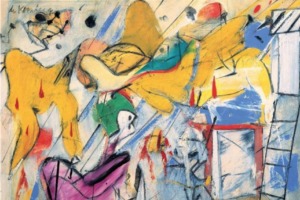
Abstract artists fast brought different genres and sub genres of abstraction into the dominant painting style of the 20th century. This influential avant-garde direction in painting derived from the request for “pure art”, non-figurative, non-objective and nonrepresentational artwork. The earliest movements toward contemporary abstraction were seen in Romanticism, Impressionism and Expressionism, where artists put a greater emphasis on visual sensation than the depiction of objects. That departure from reality in depiction of imagery in art directly lead to the building of the artistic language of abstract art. In Post Impressionist art practices of Paul Gauguin, Vincent van Gogh and Paul Cézanne is hidden the crucial impact on 20th-century modern art and abstraction. Their treatment of color and the shape directly led to Fauvist and Cubist art explorations and reductionistic depictions of nature at Henri Matisse and Georges Braque, consequently leading to Pablo Picasso and turn from Analytic to Synthetic cubism. Futurism of Carlo Carraand Umberto Boccioni entered a further stage of abstraction, while the poet Guillaume Apollinaire coined a new term Orphism for the new visual language of painting new structures out of elements that not represent reality but had been created entirely by the artist. In the search for nonrepresentational, pure art many painters experimented and so the abstract art marked the first half of the 20th century.
